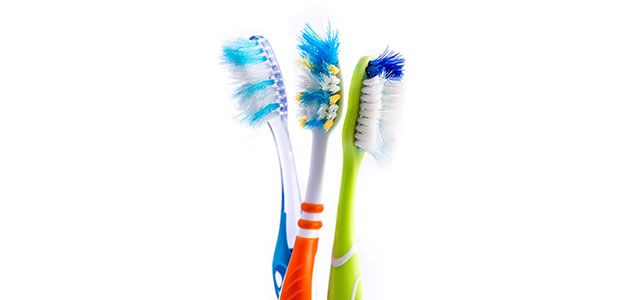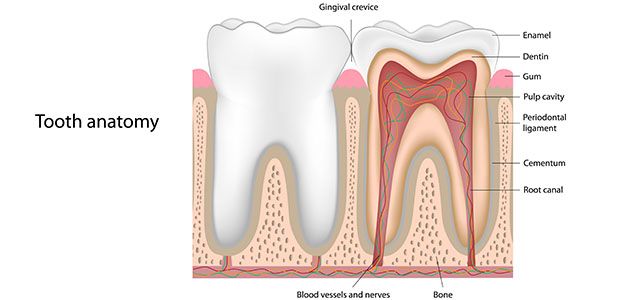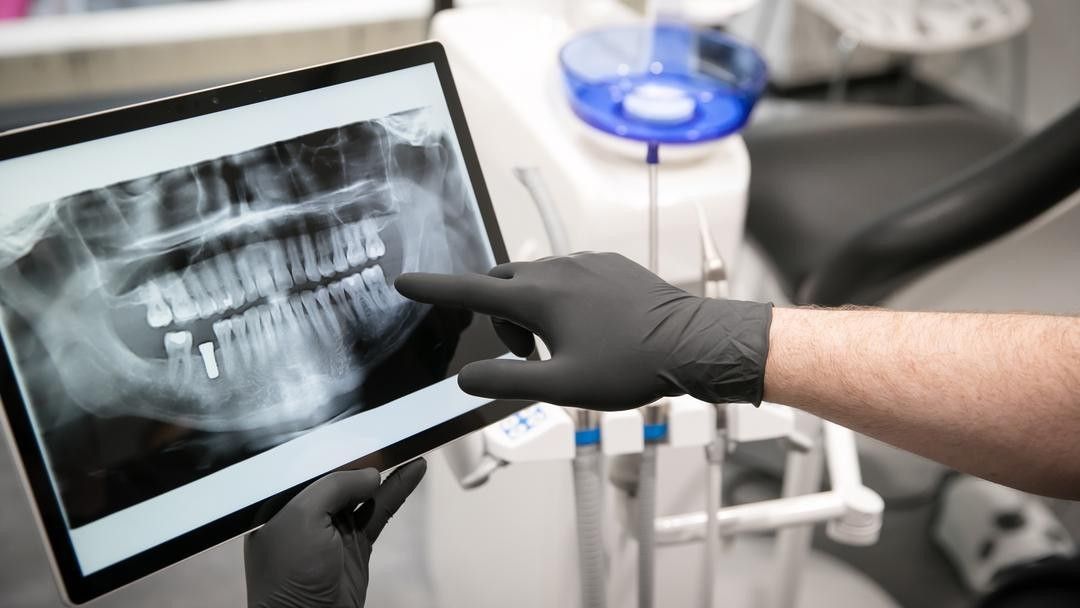How long does it take for the bristles of your toothbrush to look like this?

Surely it’s normal for the brush to become worn out after a couple of months, right? Wrong! Most of us are brushing our teeth with way too much aggression. Ideally, the bristles on your toothbrush should look like they are brand new, even after several months of use. If the bristles look bent, worn or frayed, you are probably using so much force that you are likely to be causing permanent damage to your teeth and gums.
This damage is commonly in the form of toothbrush abrasion and gum recession. It amazes me how much of it I diagnose on a daily basis.
How does it happen?
When you use a brush that is too hard (by the way, unless it’s extra soft, it’s probably too hard!) or scrub back and forth with too much force, the thin collar of gum around each tooth can easily become traumatised. After repeated daily trauma, it can recede away from the tooth. When the gum line recedes away, it exposes more of the tooth. But it’s not more enamel that is exposed; it’s the root surface of the tooth, called ‘’root dentine’’. Dentine is normally insulated by the gums or enamel and should never be exposed. Why?
Firstly, root dentine has within it tiny little pores that connect to the nerve in the centre of every tooth. So when it becomes exposed, it can cause huge amounts of sensitivity! Particular to cold temperatures, sweet foods and even touching. OUCH!
Secondly, root dentine is super soft compared to enamel. So soft that with each scrub of the brush, more and more dentine is worn away, creating a step or a ditch in the root surface. In fact, it’s often easy to see or feel the point where the enamel ends and the root dentine starts. Many of my patients say they have felt the ‘step’ with their finger nail.
Overtime, you can end up brushing off so much dentine that it can expose the nerve of the tooth. Treatment can become far more complex after this point.
Now at this point, my patients are so scared of causing damage that they avoid the gum line altogether. But this is even worse! Leaving plaque behind at the gum line can cause gingivitis, periodontitis and decay. So which is it? To brush or not to brush the gum line?
I know it sounds like a mixed message but here it is – we must learn to strike a balance between being gentle and being thorough.
Using the correct brushing technique, you should be able to thoroughly clean your teeth and gums without causing any recession or harm to your teeth. At North Sydney Dental Practice we will demonstrate the correct technique to make sure you’ve nailed it. When you come in for your next dental checkup, we’ll answer any questions you may have about how to brush your teeth properly.

Here are the top ways to make sure you are not at risk of toothbrush abrasion:
1. Make sure your brush is SOFT or EXTRA SOFT. Remember, plaque is so soft that it could be removed with a cotton tip. Even a “medium” brush is considered a no-no amongst dentists.
2. Hold your toothbrush with your fingertips or like a pen, rather than a hand grip.
3. Be gentle! use light jiggling forces, little circles or vibrations. It doesn’t matter too much, as long as the strokes are small. These small ‘’jiggly’’ movements help the ends of bristles to gently tuck under the gumline and in between the teeth where most of the plaque builds up.
4. Avoid the back and forth horizontal scrubbing that is often associated with ‘’express cleaning”. Many of us are guilty of doing this on a rushed morning!
5. Be systematic in the way you clean your teeth. Start from one side, finish on the other, one tooth at a time. Flip to the inside and work your way back. Clean the biting surfaces and repeat for the lower jaw. If you rely on random brushing, guess what? it’s not actually random at all! There is often a pattern to the randomness and you will end up over scrubbing some parts and missing other parts all together.
6. If it’s a bit too hard to drop the habit, try switching to an electric toothbrush. Many of the new ones are force controlled and some even stop or beep when you’re pressing too hard. The brush heads are often soft as well so it’s a great solution for those who struggle to avoid hard scrubbing.
So if your toothbrush bristles are not as upright as they were when you bought it, you are likely to be brushing too hard. So ease up! Your gums will thank you!
Read our previous post on general oral health topics here: Is chewing gum good for teeth?
